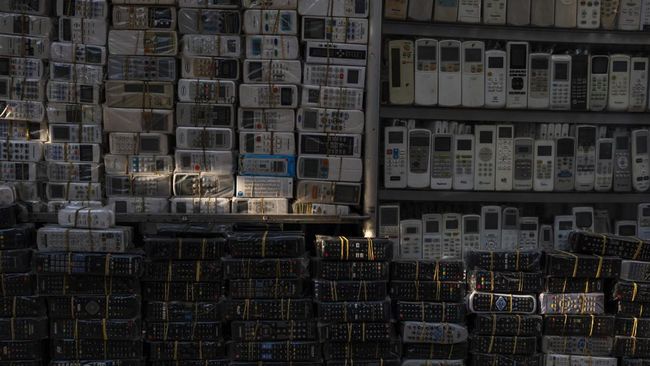Jakarta, CNBC Indonesia – A new study warns that the rapid growth of artificial intelligence (AI) could generate up to 5 million tonnes of electronic waste (e-waste) each year by 2030.
The collaborative research was led by Peng Wang of the Chinese Academy of Sciences and included contributions from scientists in Israel.
Researchers estimate that if not addressed immediately, AI could generate between 1.2 and 5 million metric tons of e-waste by the end of the decade.
The potential increase in AI e-waste is equivalent to throwing away between 2.1 and 13 billion iPhone 15 Pro units or more than 11,000 fully loaded Boeing 747 airplanes.
The new study, published in the journal Nature Computational Science, confirms that the increase in e-waste could worsen the global waste crisis, including 1.5 million tons of printed circuit boards struck and 0.5 million tons of dangerous batteries.
The increase in e-waste is due to the rapid expansion of AI applications and data centers, which require constant upgrades of high-performance computing hardware.
Generative AI models, such as those used in ChatGPT applications, are said to be very resource intensive, requiring powerful servers, processors and storage solutions to operate efficiently.
This dependence on improvements in hardware infrastructure and chip technology creates short life cycles for processors and other storage equipment, leading to an increase in discarded electronics.
Tech companies are spending a lot of money building and upgrading data centers to support next-generation AI projects and equipping them with advanced computer chips.
Most e-waste will accumulate in countries such as North America, Europe and East Asia, where most data centers are located.
E-waste includes discarded electronic devices such as computers, cell phones, chargers, cables, and large server systems, which are defined as products with batteries or plugs.
These products are the fastest growing waste stream on Earth and are rapidly outstripping the capacity of recycling facilities.
Most e-waste is not recycled, with much of it ending up in landfill or being exported to low-income countries.
Researchers offer solutions to reduce e-waste caused by AI.
They offer specific practices, including circular economy strategies that can reduce AI-related e-waste by up to 86%. By extending the life of existing computer infrastructure, reusing components, and recycling valuable materials such as copper and gold, the production of e-waste can be significantly reduced.
The authors suggest that the implementation of circular economy strategies could prevent the production of more than three million tons of waste.
(fab/fab)
Next article
New History, Chinese scientists reveal the appearance of the moon to Russia
2024-11-01 09:20:00
#Israel #opens #disaster


